Kehinde Wiley: A Master of Portraiture, Power, and Personal Style
Kehinde Wiley: A Master of Portraiture – Please note: Many or all of the products featured here are from our partners, who compensate us. This may influence which products we write about, as well as where and how they appear on a page. However, this does not influence our evaluations. Our opinions are our own.
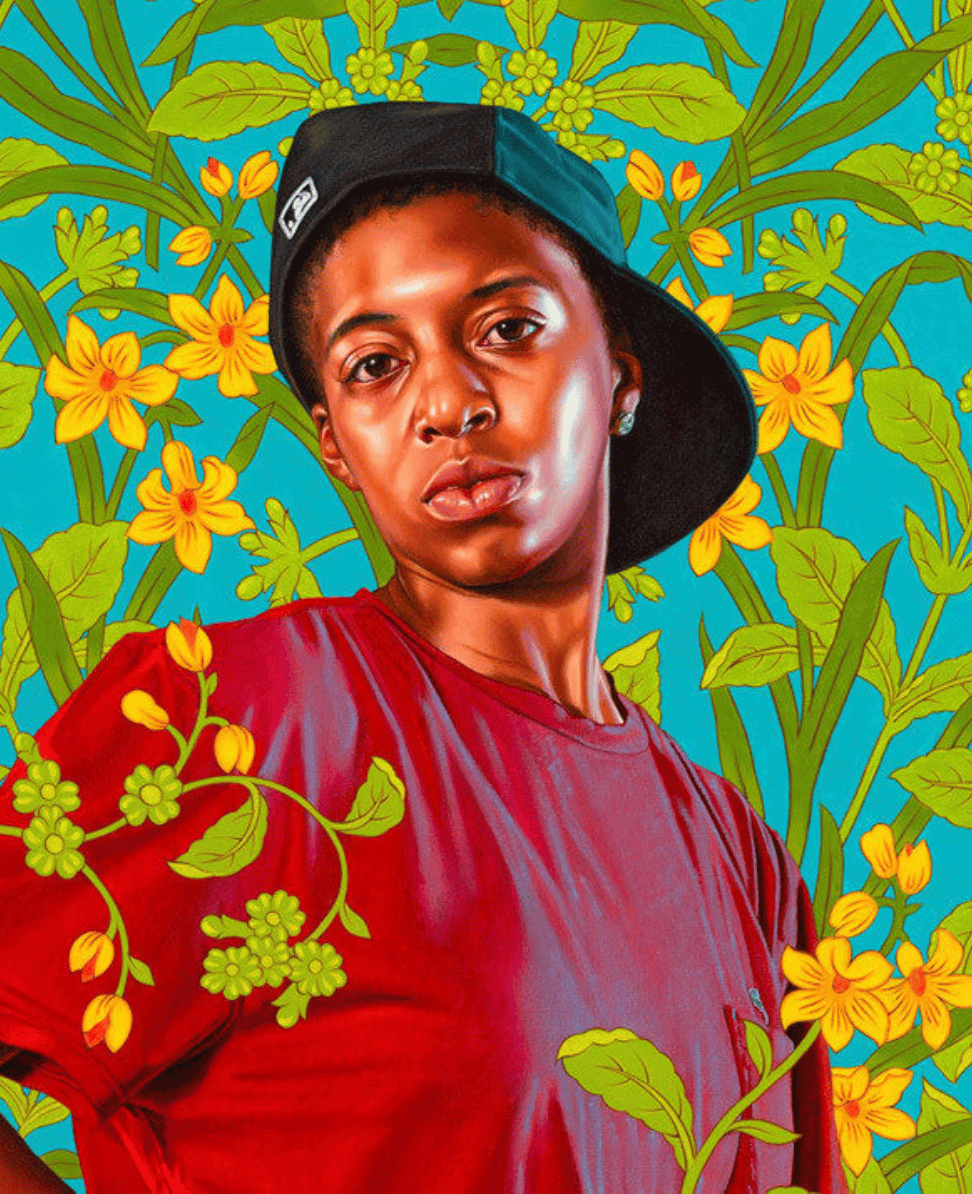
Kehinde Wiley has transformed contemporary portraiture by blending historical influence with modern themes. His vivid, large-scale paintings reimagine traditional European styles to center Black identity. By placing everyday people in poses borrowed from classical art, Wiley challenges the old narratives of beauty, power, and representation. His work is more than art—it’s a conversation between past and present.
Wiley’s influence stretches across continents and creative disciplines. He is known for his striking compositions, vibrant backgrounds, and fearless exploration of race and power. His subjects—often young Black men and women—are portrayed as noble and dignified. They reclaim spaces where their presence was once excluded.
Early Life and Education: Building a Foundation of Representation
Born in 1977 in Los Angeles, Kehinde Wiley grew up in South Central LA. His mother recognized his artistic talent early and enrolled him in art classes. By age eleven, he was already studying classical painting techniques. This early exposure set the foundation for his signature style.
Wiley later attended the San Francisco Art Institute for his BFA. He earned his MFA from Yale University in 2001. Both experiences shaped his approach but also exposed him to the gaps in traditional art history. He noticed the absence of Black faces in European portraiture. Rather than accept this, he sought to correct it.
The Work: Classical Technique, Contemporary Voice
Wiley’s paintings mix classical methods with modern subjects. He uses oil on canvas to produce detailed, realistic portraits. Each subject is chosen through a process called “street casting.” Wiley invites everyday people to sit for portraits, then asks them to select a pose from art history.
The results are striking. Young people wearing jeans and sneakers take on the grandeur of monarchs and military leaders. They are framed by lush, colorful backgrounds that add depth and symbolism. This fusion of old and new creates a fresh visual language.
Wiley’s work goes beyond the canvas. He has explored stained glass, sculpture, and even bronze busts. Each medium allows him to expand his narrative. But no matter the format, his mission remains clear: honor the dignity of his subjects.
Major Exhibitions and Milestones: A Global Reach
Wiley has exhibited his work around the world. His first major solo show, “Passing/Posing,” launched in 2001. Since then, his art has appeared in top institutions such as:
- The Brooklyn Museum
- The Studio Museum in Harlem
- The Museum of Contemporary Art, Los Angeles
- The Petit Palais in Paris
- The Modern Art Museum of Fort Worth
In 2019, he made headlines with his sculpture “Rumors of War.” It first appeared in Times Square, then moved to the Virginia Museum of Fine Arts. The piece reimagined an equestrian statue—often used to honor Confederate leaders—with a young Black man wearing sneakers. The statue sparked conversation and symbolized a shift in public art.
Artistic Philosophy: A Reclaiming of Space
At the heart of Wiley’s work is a commitment to visibility. He shines a light on people overlooked by traditional art. His subjects often come from urban communities and are chosen on the street. He involves them in the creative process by letting them select classical poses to emulate.
This collaboration transforms each painting. The subjects are no longer passive figures. They become active participants in redefining history. Wiley’s art reminds us that representation matters—and who is seen shapes our cultural memory.
Each painting takes months to complete. Wiley uses time-honored oil techniques, resulting in rich textures and fine detail. But his style remains accessible. Viewers can relate to his subjects because they reflect real life, not abstract ideals.
Awards and Recognition: A Celebrated Visionary
Kehinde Wiley has received numerous accolades for his work, solidifying his status as one of the most influential artists of the 21st century. Some of his most notable honors include:
- US Department of State Medal of Arts (2015) – For his role in cultural diplomacy
- TIME 100 Most Influential People (2018) – Celebrated for his impact on culture and representation
- W.E.B. Du Bois Medal from Harvard University (2019) – Honoring his contributions to African American culture
- Honoree at the Gordon Parks Foundation Gala (2022) – Recognizing excellence in the arts and social justice
His paintings are held in prestigious collections, including The Metropolitan Museum of Art and LACMA. These honors affirm his place in the canon of modern art, but they also highlight a broader shift. Museums are embracing diverse voices and challenging old norms.
Wiley’s influence reaches beyond gallery walls. His visual style appears in music videos, editorial spreads, and fashion campaigns. His impact is especially strong among younger artists seeking role models in contemporary art.
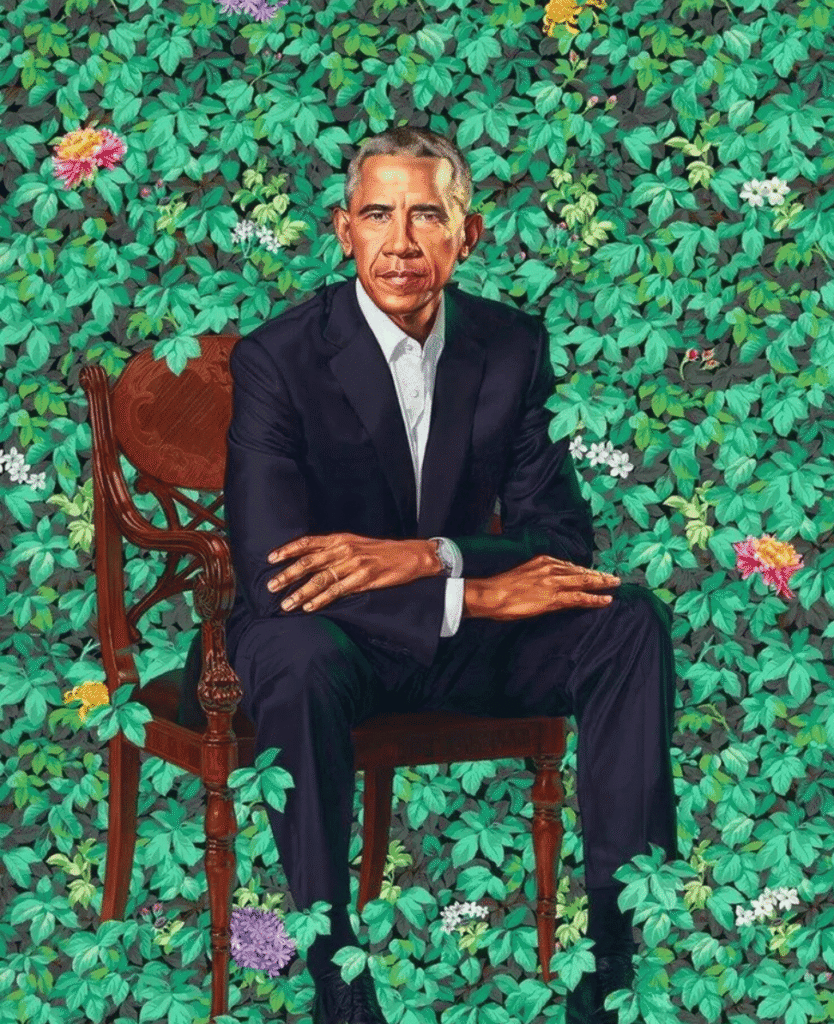
Among Wiley’s most historic achievements is his official presidential portrait of Barack Obama, unveiled in 2018 at the Smithsonian’s National Portrait Gallery. Departing from traditional presidential portraiture, Wiley portrayed Obama seated against a vivid tapestry of symbolic flora—chrysanthemums for Chicago, jasmine for Hawaii, and African blue lilies representing Kenya. The unconventional background, paired with Obama’s relaxed yet commanding pose, created a portrait that was both personal and monumental. It was the first official presidential portrait by a Black artist, marking a groundbreaking moment not just in Wiley’s career but in American art history.
Cultural Impact: Beyond the Frame
Kehinde Wiley’s work has influenced far more than just the art world. He’s played a critical role in expanding representation across visual culture. By placing Black figures in traditionally white European compositions, he challenges the systems of exclusion still embedded in art, media, and education.
His impact can be seen in fashion, music videos, editorial photography, and museum curation. His collaborations with brands and institutions open the door for new generations of artists to dream bigger and paint themselves into the narrative.
In 2021, Wiley founded Black Rock Senegal, a multidisciplinary artist-in-residence program in Dakar. This initiative provides a space for global artists to create and connect, furthering his commitment to cultural exchange and mentorship.
Final Thoughts: A Legacy Still in Motion
Kehinde Wiley is not just a painter—he’s a rewriter of visual history. His work forces viewers to reconsider what power looks like, who it belongs to, and how art can challenge entrenched norms. With technical brilliance and cultural insight, Wiley continues to shift conversations about race, beauty, and legacy in profound and necessary ways.
As his career evolves, one thing remains clear: Kehinde Wiley’s canvas will always reflect more than just an image. It reflects a movement. A reclamation. And most importantly, a future where every face has a place in the portrait of power.
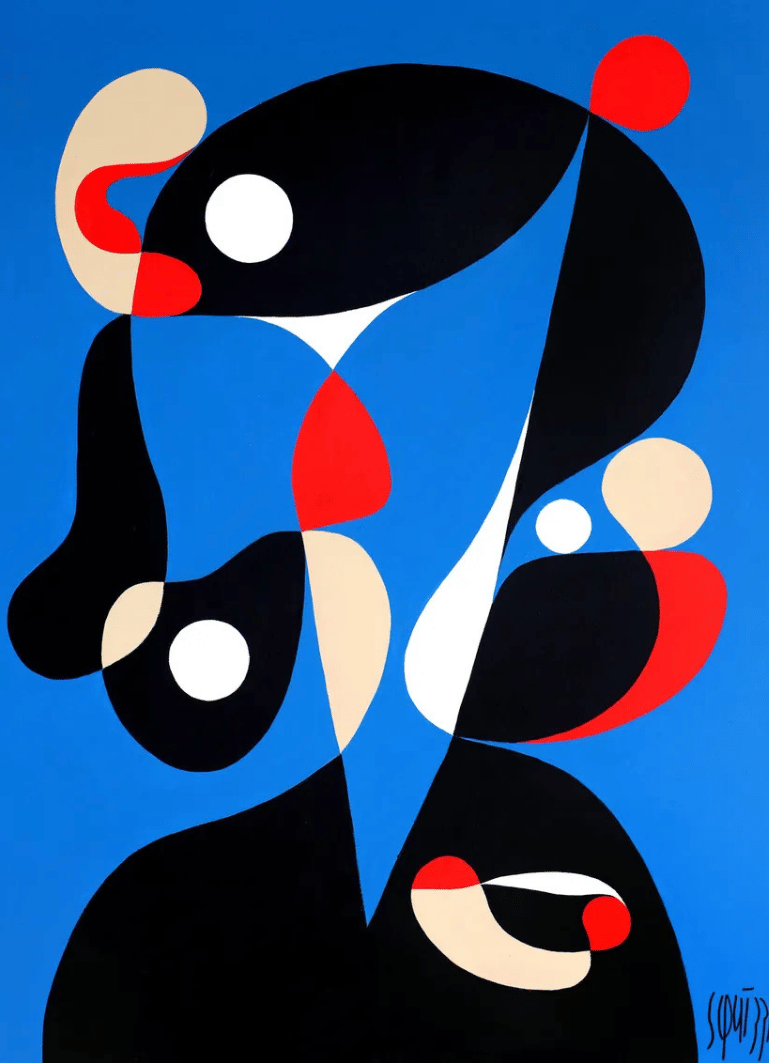
Related Posts
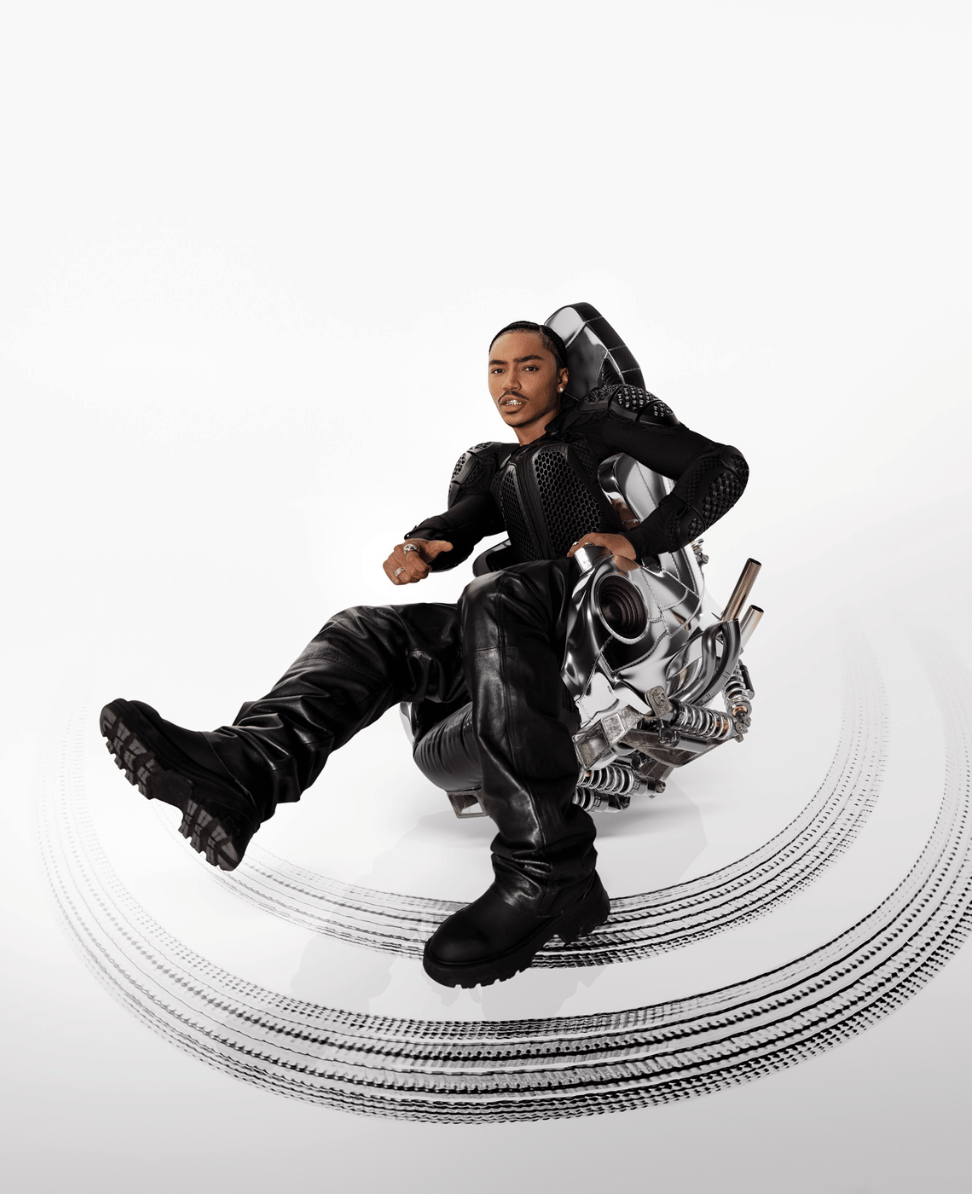
Josh Levi Is Houston’s Triple-Threat Talent Taking the Music World by Storm
Josh Levi Is Houston’s Triple-Threat – Please note: Many or all of the products featured here are from our partners, who compensate us. This may influence which products we write about, as well as where and how they appear on a page. However, this does not influence our evaluations. Our opinions are our own. Josh Levi is more than just
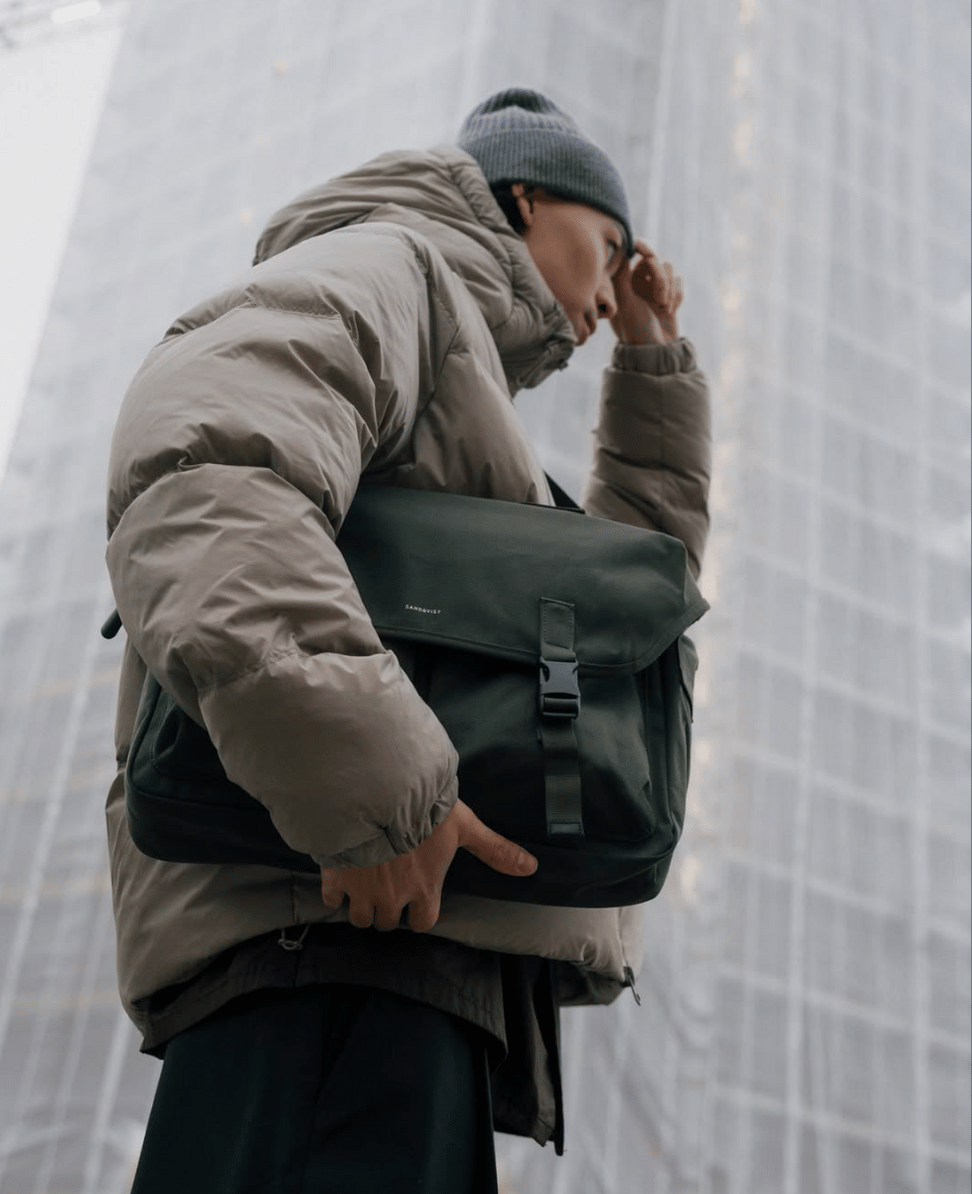
Everyday Essentials, Ethically Made: The Sandqvist Everyday Originals Collection
Elevate Your Daily Routine – Please note: Many or all of the products featured here are from our partners, who compensate us. This may influence which products we write about, as well as where and how they appear on a page. However, this does not influence our evaluations. Our opinions are our own. Everyday Bags. Extraordinary Values. Your daily gear
